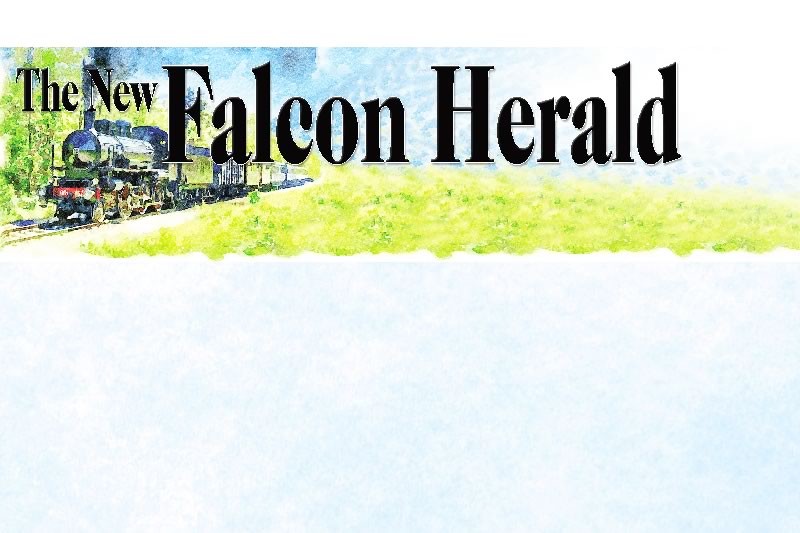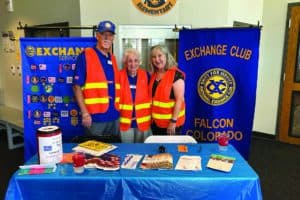When Oscar Wilde arrived in Colorado Springs April 14, 1882, he was 27 years old and in the fourth month of a year-long lecture tour that would take him from New York City to San Francisco ó and back. The young Irishman was conducting a series of lectures and promoting the latest Gilbert and Sullivan operetta, “Patience.”In a few years, Wilde would become famous for writing four successful plays, including ìThe Importance of Being Earnest,î but initially Wilde had little to his name, having published just a single, slim volume of poetry.However, he was a master of self-promotion. Upon arrival in New York City Jan. 3, 1882, reporters scrambled to capture every word Wilde uttered. “I was very much disappointed in the Atlantic Ocean,î Wilde said. ìIt was very tame. I expected to have it roar about and be beautiful in its storms. I was disappointed in it.”Wilde lectured on the Aesthetic Movement, which he defined as ìthe science of the beautiful. It is a search for the secret of life.” He developed three lectures: “The English Renaissance,î “The House Beautiful” and “The Decorative Arts.”Six feet three inches tall and a bit paunchy, Wilde delivered his remarks while wearing a black velvet dress coat, lace collar and cuffs, knee breeches, silk stockings and shoes with shiny buckles. He had a sunflower in his lapel, and held a white glove in one white-gloved hand and, perhaps, a lily.In Colorado Springs for his 50th lecture, Wilde must have had high hopes for a sellout. After all, the city was a popular destination for tourists from London; and, as a result, had earned the nickname, “Little London.” When rain fell in London, it was said the people of Colorado Springs carried umbrellas.Just the night before, Wilde had won the hearts of curiosity-seeking miners at the sold-out Tabor Opera House in Leadville. Something of Wilde’s persona must have preceded the lecture, for it was rumored some miners might mock him by wearing clothes similar to his stage attire. The rumored humiliation failed to materialize.ìThe Leadville Daily Heraldî reported that Wilde stumbled on stage late, “with a stride more becoming of a giant backwoodsman than an aesthete.”Wilde began by advising his Leadville audience to emulate 16th century Pisa, where artists were inspired by “brilliantly lighted palace arches and pillars of marble and porphyry, noble knights Ö riding in the sunlight, groves of oranges and pomegranates, and through these groves, the most beautiful women that the world has ever known, pure as lilies, faithful, noble, and intellectual.”One listener shouted, “We live in adobes in this country!”Just as Wilde declared “there is no better way of loving nature than through art,” a baby began to wail. “I wish the juvenile enthusiast would restrain his raptures,” Wilde remarked.Wilde read passages from the autobiography of Benvenuto Cellini, a celebrated silversmith of the Italian Renaissance. Wilde later wrote: ìThey seemed much delighted (but) I was reproached by my hearers for not having brought him with me. I explained that he had been dead for some Ö time, which elicited the enquiry, ‘Who shot him?'”After the lecture, associates of Horace Tabor, owner of the Tabor Opera House, led Wilde on a tour of Leadville’s red-light district. They drank and gambled at Charles “Pap” Wyman’s saloon, where a sign above the piano read “PLEASE DO NOT SHOOT THE PIANIST. HE IS DOING HIS DAMNEDEST.””I was struck by Ö the fact that bad art merits the penalty of death, and I felt in this remote city … the aesthetic implications of the revolver,î Wilde wrote.Around midnight, a horse and buggy carried Wilde and his guides to Tabor’s Matchless Mine, which Wilde toured while wearing Tabor’s own rubber rain suit to ward off the constantly dripping groundwater.After the tour but still 100 feet below ground, Wilde was greeted by a dozen miners, each possessing a bottle of liquor.”By invariable Western custom, every bottle must make the rounds,î wrote the ìDenver Tribune.î ìWithin a few minutes all have had 12 snorters. The miners without exception are rather dizzy, but Wilde remains cool, steady, and went away showing neither fatigue nor intoxication.îWilde later wrote that the Leadville miners were amazed to see that art and appetite could be combined. “The first course was whiskey, the second whiskey, the third whiskey, all the courses were whiskey, but still they called it supper.”After that night of revelry, Wilde made his way to Colorado Springs.Had Wilde arrived three years earlier, he would have lectured at the City Hall Theater with its tiny stage ó just 10 feet x 20 feet.The theater was notable for its production of Shakespeare’s “Henry V,” including a live horse for battle scenes on a second floor stage. When actor George Rignold, playing Henry, rallied his troops, he impaled the low ceiling with his royal flagstaff, where it stuck. When Rignold ordered his emissaries to “Be gone!” he muttered “But I don’t know where the devil you’ll go!”But now, in 1882, Wilde would deliver his ìDecorative Artsî lecture at the new Opera House at 18 N. Tejon Street. It featured gilt and velvet decoration, which complemented the stage curtain with its Venetian scene and the Colorado state motto, “Nil sine Numine” (“Nothing without Providence”). The Opera House seated 800 people who paid $1.50 for a main floor seat or 50 cents for the gallery.Alas, the citizens of Colorado Springs stayed home. The city’s cultural leaders decided Wilde was an “advertising dodge” good enough to fool the rubes in Leadville or Denver, but not them. Had a true aesthete, such as John Ruskin, appeared, it would have sold out, according to the ìColorado Springs Daily Gazette.îThe next day, Wilde missed the train to Denver for his second lecture there. He would have to catch the next train in four hours.Eugene Field, editor of the ìDenver Tribune,î had organized a reception party to greet Wilde’s return to Denver. Reasoning that no one would recognize Wilde in broad daylight, Field decided to impersonate him.Carrying a calla lily and wearing a fur-collared overcoat with a sunflower in its lapel, a broad-brimmed hat and an auburn wig, Field raced to a station south of Denver and boarded the train Wilde had missed earlier. The train pulled into the Denver station to the cheers of Denver’s high society.As Wilde, Field bowed gravely and then created a sensation as he was driven leisurely through downtown Denver while reading a book and affecting a carelessly dramatic pose. The ruse was exposed when Field arrived at the ìDenver Tribuneî for an interview.When Wilde’s train arrived a few hours later, no one greeted him and he had trouble finding the Tabor Grand Opera House. He delivered his House Beautiful lecture and immediately departed for Kansas City, Missouri. There, a newspaper published a review, concluding that “there are some things so infernal bad that they are good, and Mr. Wilde’s lecture is one of those things.”





